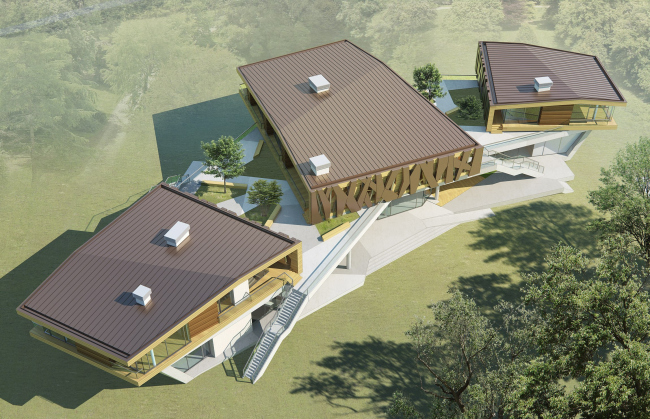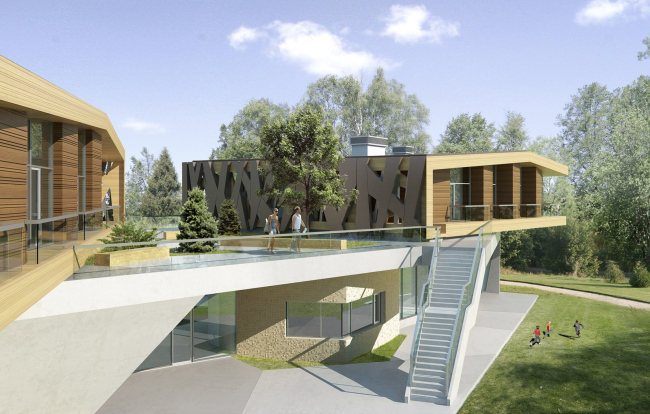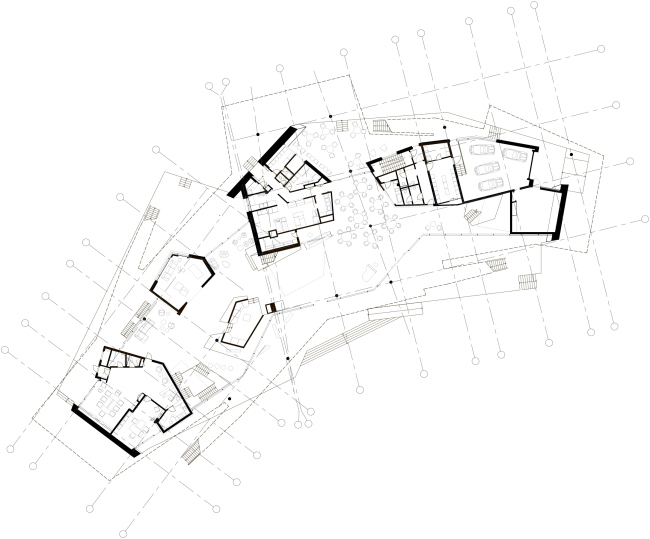|
Published on Archi.ru (https://archi.ru) |
|
| 28.03.2012 | |
|
Nature Faceted |
|
|
Anna Martovitskaya, Julia Tarabarina |
|
| Architect: | |
| Vera Butko | |
| Anton Nadtochiy | |
| Studio: | |
| ATRIUM | |
|
In the south-west of Moscow region, the architectural office “Atrium” is building a private hotel. In order to visually minimize the rather large volume, the architects employed their favorite tactic – they made the building look like a natural part of the landscape. Due to the fact that the land site allotted for the construction of the hotel is fairly large, the building was in fact designed with the natural surroundings being the only outside consideration for its planning. While defining its exact location and the configuration of it layout, the architects took special care to leave the centuries-old oak trees intact – this was the primary condition put forth by the commissioner, and the architects fully agreed with it. As a result, the layout of the hotel has the shape of a sophisticated polygon that is inscribed in between the tree trunks. Vera Butko and Anton Nadtochy’s trademark style is apparent here. Besides the clear-cut shape structure and sophisticated interaction of the volumes, its characteristic trait is the close connection – in fact, almost the alloy – of the man-made and the natural. The concrete stylobate with its large terraces looks as if it grows directly from the ground and supports three volumes of the residential blocks that overhand a little beyond its confines. The “little houses” on top are made out of peculiar little “brackets” – it looks as if somebody took a sheet of paper and bent it. The houses are averted from one another so as their window would overlook the beautiful scenery, and not the neighbors’ windows. The side part of each bracket is composed of a few layers of copper and wood. Behind it, there are the open galleries that allow the guests to walk out on the roof of the stylobate. The latter will get improved as well: it will have benches and lights; also some trees are going to be planted here. The four low-sloped stairways connect the top of the stylobate with the ground, thus giving the guest an opportunity to exit out of their rooms directly into the forest, bypassing the reception and the entrance lobby. And - the reception and the entrance lobby are connected to each of the blocks with a staircase of their own. The central staircase that goes directly over the reception counter is made of wood and glass, and those ones that lead to the side buildings resemble massive sculptures because of their black metal finish. Formally speaking, the stylobate is a “fold” of complex geometry with cuts, slits, margins, and the surfaces of various levels (one can even speak of “folding architecture” here). The spaces between them were filled with large-scale glass pieces. This fold houses several functional volumes that pierce it through at some places: they show up at the facades, and “fall through” down to the basement level. All this creates striking dimensional perspectives, enhances the play of the “inner” and “outer” spaces and ultimately “lets in” the surrounding scenery inside the building. NoneNoneNoneNoneNoneNoneNoneNoneNoneNoneNoneNoneNoneNone |
|













